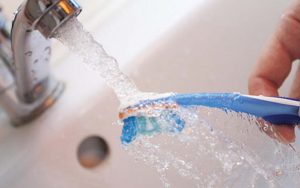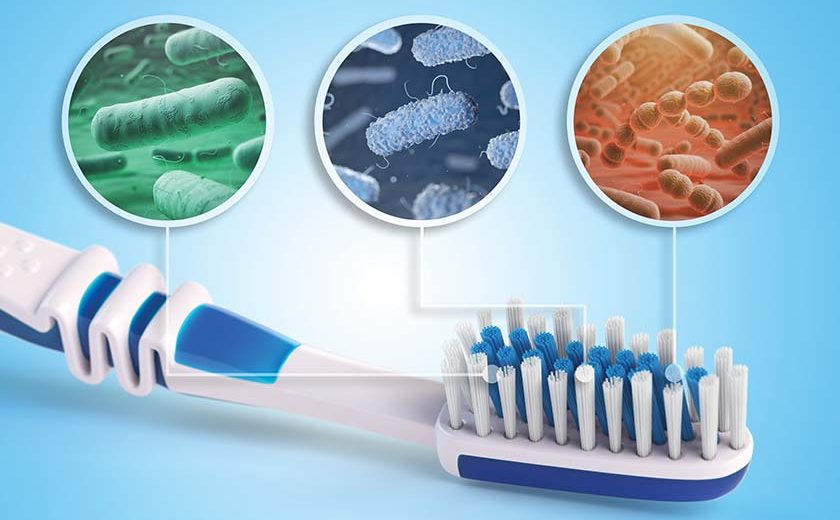Toothbrush bristles are coated in water, toothpaste, food debris and mouth bacteria and the possibility of your toothbrush bristles to harbour a virus is high when you have flu or a cold.
Disinfecting toothbrush bristles to leave them clean and fresh is important to protect your mouth and overall body’s health. Oral health is much more than a nice smile.
Your mouth is a mirror to your body and reflects your general health and well-being. It’s never too early or too late to start looking after your mouth. As you age, it becomes even more important to take good care of your teeth and dental health. If cared for properly, your teeth can last a lifetime. Note that your mouth changes as you age. The nerves in your teeth can become smaller, making your teeth less sensitive to cavities or other problems.
Apart from adopting a dental hygiene routine – brushing and floss, there is one more important thing that you forgot to check; your toothbrush. The average toothbrush can be home to more than 100 million types of bacteria including E. Coli, Staphylococcus Aureus, Streptococcus Mutans, Lactobacillus and more.

Toothbrushes are bacteria’s playground
It is vital to keep your toothbrush clean every time you use it. According to the American Dental Association (ADA), microorganisms from your mouths and the environment grow on toothbrushes after you use it. Bacteria from toothbrush may cause tooth enamel erosion, tooth decay, dental caries, gum disease, strep throat and diarrhoea. Bacteria can easily be transferred to your mouth, resulting in potential short and long-term health problems.
It is advice to remove all toothpaste residue and food debris after you brush your teeth by rinsing the bristles thoroughly in clean water. Once it is clean, stand it on its handle end and make sure it’s not touching other toothbrushes to allow it to air dry. Covering the toothbrush bristles won’t allow them to dry out, thus, breed more bacteria. You should replace your toothbrush every three or four months, or earlier if the bristles are frayed or worn.
Disinfecting toothbrush bristles
You should go the extra mile in keeping your dental health by disinfecting toothbrush to ensure it is completely clean and safe to use. People usually disinfect their toothbrush after recovering from respiratory illness as the toothbrush may be contaminated with the flu germs. You could throw out your toothbrush and buy another one once you’ve recovered from flu, but that probably isn’t necessary. If flu germs remain on the toothbrush, you can destroy them by disinfecting the bristles. It takes less than a minute to do so.
There are many ways to disinfect toothbrush and the easiest way is by swirling the bristles in antibacterial mouthwash for 30 seconds. Rinse it with clean water and your toothbrush is ready to use again. You may dissolve two teaspoons of baking soda in a cup of water and soak the toothbrush. Baking soda is a good ingredient to disinfect germ and bacteria and same goes for vinegar. It is also inadvisable to put a toothbrush in a microwave or dishwasher as heating the plastic on toothbrushes could damage the brushing edge.
Beautiful teeth, beautiful smile
With proper care, your teeth and gums can stay healthy throughout your life. The healthier your teeth and gums are, the less risk you have for tooth decay and gum disease. In order to avoid any contamination, do not share a toothbrush even with your spouse. It is best not to store a toothbrush in an airtight plastic container as the toothbrush can’t dry out and encourages mould growth. A healthy smile can be a great asset, so smile!
References
WebMD
Dental Health


